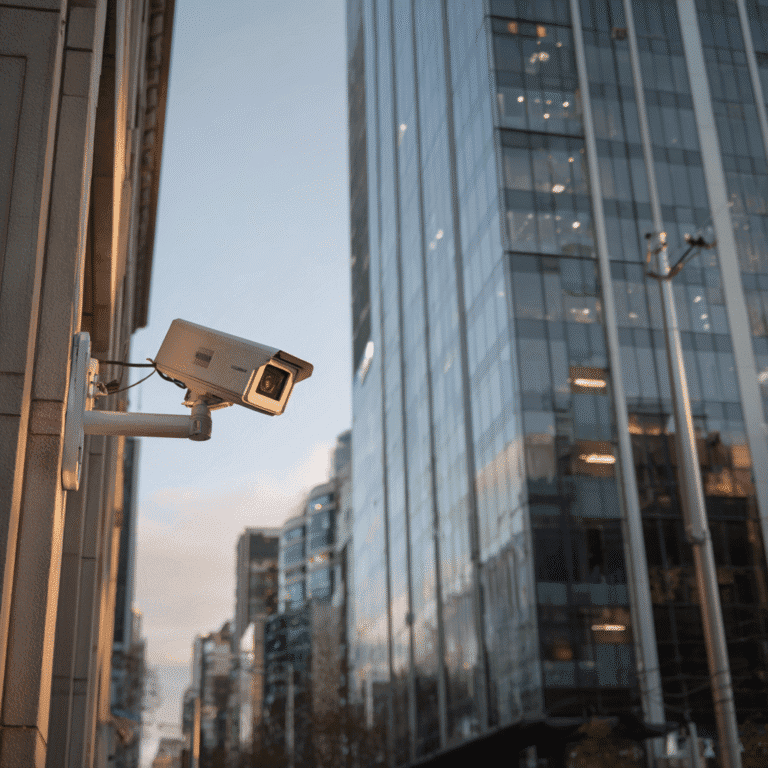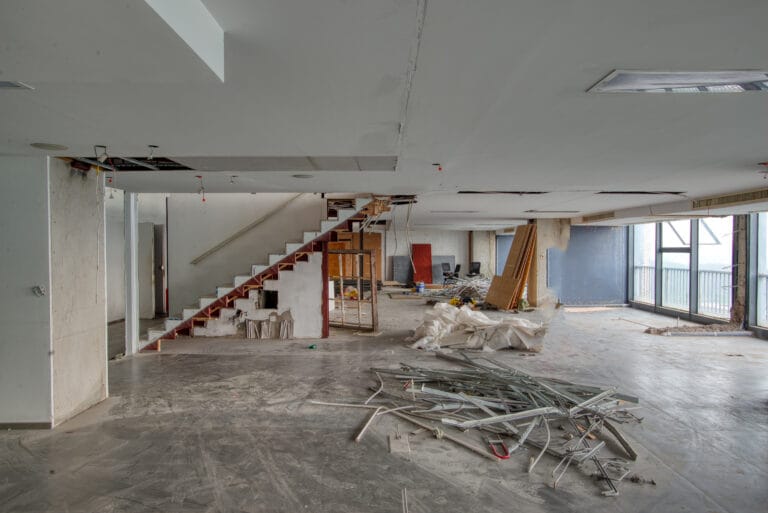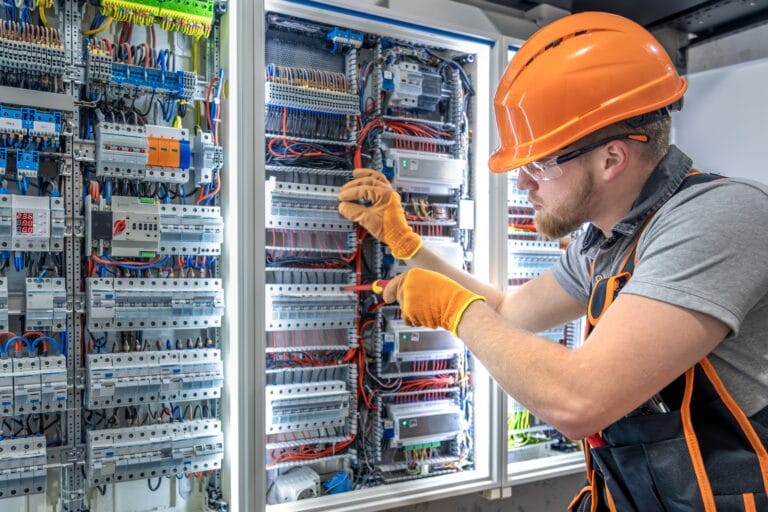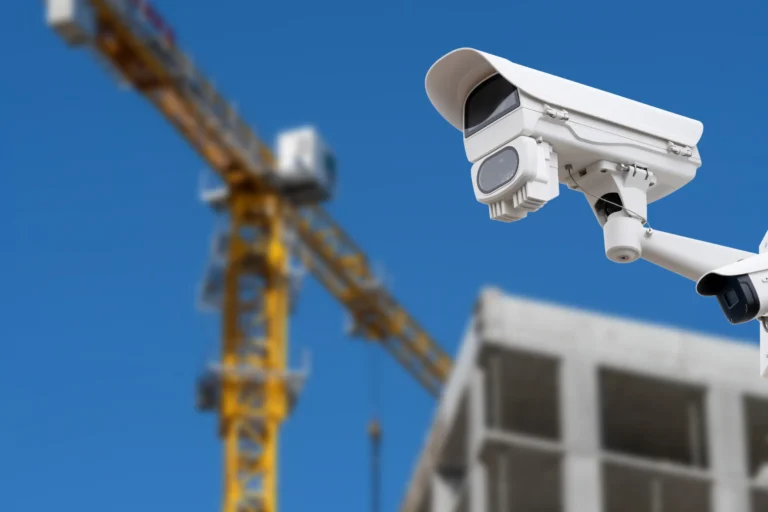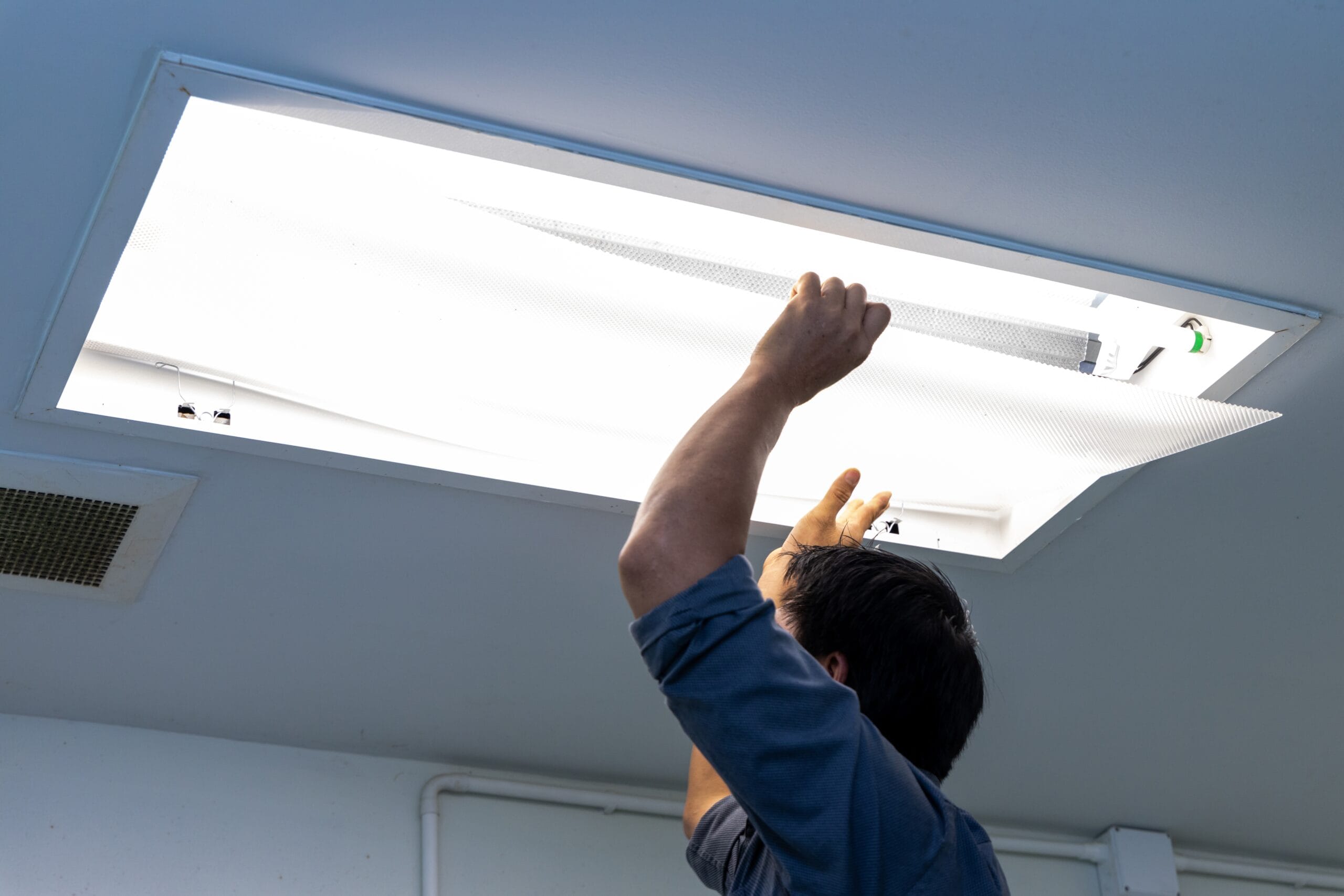
How much do electricians charge to install lights?
When it comes to home lighting, professional installation isn’t just about convenience—it’s about protecting your property and loved ones. Electrical work demands strict adherence to safety standards, expert knowledge of wiring, and compliance with local building codes. A certified electrician ensures every fixture is installed correctly, sharply reducing the risk of electrical fires, faulty circuits, or expensive repairs down the line.
Homeowners often ask: How much do electricians charge to install lights? The answer depends on several important factors:
- Type of Fixture: The electrician light installation cost varies for ceiling lights, LED downlights, chandeliers, pendant lights, or outdoor pool lighting.
- Complexity: Replacing an existing fixture carries a different light installation price compared to running new wiring or upgrading to smart systems. In some cases, data cabling may also be involved.
- Location: Accessing high ceilings or outdoor areas like pools impacts both labor and material costs—pool light installation cost often sits higher due to waterproofing requirements.
- Parts vs. Labor: Electrician costs for light installation break down into fixture pricing (such as LED light installation cost) and professional labor which is best handled by a residential electrician.
- Regional Differences: Rates fluctuate by city or state, affecting what homeowners pay for even basic jobs.
Reliable pricing information for homeowners begins with understanding these variables. Safety, code compliance, and guaranteed results come standard when you hire a licensed pro—saving you time and worry right from the start.
Average Cost Breakdown
Every lighting project has its own specific needs and expenses. Having a detailed cost breakdown for various types of light installations allows you to plan confidently before hiring a professional.
Ceiling-Mounted Lights
- Typical Installation Cost: $120 – $300 per fixture
- Labor Costs: $75 – $150
- Part Costs: Basic ceiling lights start at $20, but designer or LED models can reach $150+
Standard ceiling light installation cost covers straightforward swaps with existing wiring. For more energy-efficient options, consider LED downlights, which may have a higher upfront cost but offer long-term savings.
Pendant Lights
- Typical Installation Cost: $150 – $400 per pendant
- Labor Costs: $90 – $200
- Part Costs: Pendants range from $30 for basic models to $250+ for premium designs
Higher ceilings or grouped pendants may increase labor time and costs.
Chandeliers
- Typical Installation Cost: $200 – $700+ depending on size and complexity
- Labor Costs: $120 – $350 (lifting, securing, and wiring more intricate fixtures)
- Part Costs: Mini-chandeliers start at $60, while large or crystal models easily exceed $500
Heavy chandeliers often require two professionals and reinforced mounting hardware, affecting both part and labor charges.
Recessed Lighting
- Typical Installation Cost: $125 – $300 per can/light
- Labor Costs: $75 – $175 per light (cutting drywall, running wiring, ensuring code compliance)
- Parts Costs: Recessed lighting kits range from $25 to over $80 each depending on LED technology and trim options
Recessed lighting installation cost increases in finished ceilings or when retrofitting older homes. If you’re considering installing LED recessed lights, remember that they typically require a transformer.
Specialty Installations: LED & Solatube Skylights
- LED Installation Cost: Swapping standard fixtures for LEDs adds approximately 10–20% to parts cost; labor remains similar unless rewiring is needed.
- Solatube Skylight Cost / Cost of Solatube Skylights: Expect a total cost between $750 – $1,500 per skylight including materials and installation. Labor accounts for around half the total due to roof work and sealing.
|
Fixture Type |
Labor Parts |
Total Installed |
Cost |
|---|---|---|---|
|
Ceiling Light |
$75-$150 |
$20-$150 |
$120-$300 |
|
Pendant Light |
$90-$200 |
$30-$250 |
$150-$400 |
|
Chandelier |
$120-$350 |
$60-$500+ |
$200-$700+ |
|
Recessed Light |
$75-$175 |
$25-$80 |
$125-$300 |
|
Solatube Skylight |
~$375+ |
~$375+ |
~$750–$1,500 |
Cost Factors
Understanding the factors influencing cost is essential before starting any light installation project. These details directly affect your final quote and can help you plan your budget with confidence.
Type of Lighting
The style and design of your fixture play a significant role in determining the light installation cost:
- Pendant Light Installation Cost: Straightforward pendant lights often carry a lower labor charge—especially if they’re replacing an existing fixture. Unique or multi-pendant designs may require additional wiring and mounting, pushing costs higher.
- Downlight/ Recessed Light Installation Cost: Downlights require precise ceiling cuts and careful placement, which increases both labor time and potential material needs.
- Chandeliers: Larger or unusually heavy fixtures demand extra support, exact electrical connections, or even ceiling bracing. This complexity is reflected in the price.
Installation Complexity
Complexity drives up costs quickly. Multi-fixture installations, smart lighting integrations, or lights with integrated dimmers require more planning and specialized skills. Electricians may need to troubleshoot unforeseen wiring issues behind walls or ceilings.
A simple fixture swap takes less time and fewer materials than routing new circuits for custom lighting.
Location Challenges
Where lights are installed changes the equation. High ceilings, tight crawl spaces, stairwells, or exterior walls introduce risk and slow progress for even the most qualified professionals:
- Accessing difficult locations often means additional equipment (ladders, scaffolding), which adds to the bill.
- Outdoor light installation must account for waterproofing, conduit requirements, and local code compliance.
New Wiring Needs
Upgrading from an old fixture to a modern lighting system can expose outdated or insufficient wiring. This is where wiring and rewiring services become essential:
- Adding new wires—whether for safety upgrades or layout changes—involves cutting into drywall, fishing lines through studs, and patching holes after.
- Expect material costs to increase if circuit breakers need expansion or replacement.
Local Cost Variations
Geography matters. Urban areas with higher living expenses drive up hourly rates for electricians. Rural zones may see travel fees added to light installation cost due to distance from supply stores or city centers. Regional code variations can also dictate more rigorous (and expensive) installation methods.
Staying informed about these factors ensures you’re never caught off guard by unexpected line items on your invoice.
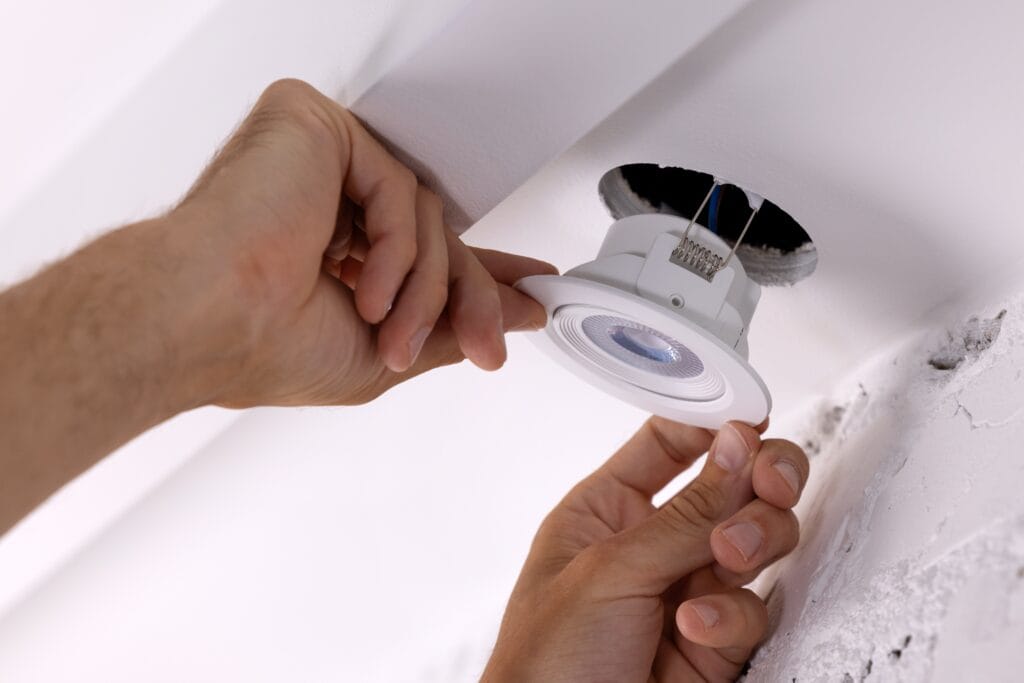
Typical Pricing Estimates & Examples
Understanding the typical costs associated with various light installations can help homeowners budget more effectively. Below are examples of common pricing scenarios for different lighting installations.
Breakdown of Costs for Simple Fixture Replacements
Replacing an existing light fixture is often the most straightforward and cost-effective option. Electricians typically charge between $75 and $200 per hour for labor, with a simple fixture replacement taking about 1-2 hours. This means the labor cost ranges from $75 to $400. Adding the price of the fixture itself, which can vary from $20 to $200, the total cost for a simple replacement can range between $95 and $600.
Pricing Details for Installing New Light Fixtures
When installing new light fixtures, especially where none existed before, costs can be higher due to the need for new wiring and possible modifications to ceilings or walls. Here’s what you might expect:
- Labor Costs: Typically between $200 and $500 depending on complexity.
- Fixture Costs: Varies widely from $50 to $500, depending on style and brand.
Combining these factors, the total cost for installing a new light fixture falls within $250 to $1,000.
Average Cost of Recessed Lighting Installations
Recessed lighting requires precise cutouts in ceilings and additional wiring, making it a bit more costly. Here’s a breakdown:
- Per Light Installation Cost: Electricians charge between $125 and $300 per light, including labor.
- Additional Costs: If extensive wiring or ceiling modifications are needed, costs can increase by another $200 to $500.
For a typical room needing 4 recessed lights, expect total expenses between $800 and $2,000.
Expenses Associated with Outdoor Lighting Installations
Outdoor lighting installation costs vary significantly based on location difficulty and weatherproofing requirements:
- Basic Outdoor Light Installation: Ranges from $150 to $300 per fixture.
- For more complex installations like landscape lighting or security lights:
- Labor Costs: Between $200 and $600.
- Fixture Costs: From $50 to $400, depending on durability and design.
Total costs for outdoor lighting projects can range from $250 to over $1,000 per fixture when considering both labor and material expenses.
These estimates provide a clear understanding of potential costs associated with various lighting projects. By knowing these figures, homeowners can better plan their budgets and ensure they receive fair pricing from electricians. For more specific needs such as residential electrical services or commercial emergency lighting solutions, it’s advisable to consult with professionals who specialize in these areas.
Hiring Tips
When hiring an electrician for light installations, it’s crucial to ensure you select a qualified professional who guarantees safety and efficiency. Here are key criteria and tips for finding the right electrician:
Criteria to Consider
- Certification and Licensing: Verify that the electrician holds the necessary certifications and licenses required by your region. This ensures they meet industry standards and regulatory requirements.
- Experience: Look for an electrician with substantial experience in installing various types of light fixtures, including downlights, chandeliers, pendant lights, and recessed lighting.
- Insurance Coverage: Ensure the electrician is insured to protect against potential damages or accidents during installation.
- Reputation: Check reviews and ratings from previous clients to gauge the electrician’s reliability, workmanship, and customer service.
Questions to Ask
Before making a decision, ask potential electricians these important questions:
- Can you provide references from past clients?
- What is your experience with installing [specific type of light fixture]?
- Do you offer a warranty or guarantee on your work?
- How do you handle potential issues or repairs post-installation?
- What is your estimated timeline for completing the installation?
Importance of Quotes and Inspections
Getting quotes and inspections done before proceeding with the work is essential. It helps you understand the scope of the project, breakdown costs, and avoid unexpected expenses.
- Detailed Quotes: Request detailed quotes that separate labor costs from parts costs. This transparency helps in comparing different electricians fairly.
- Site Inspection: A thorough site inspection allows electricians to assess complexities related to the installation site location, existing wiring conditions, and any challenges that might affect pricing.
Hiring a professional electrician involves careful consideration of their qualifications, experience, and reputation. Asking pertinent questions ensures clarity on their capabilities and guarantees you receive quality service at a fair price.
By prioritizing these factors, you can confidently proceed with your lighting installation project knowing you’ve chosen a skilled professional who meets uncompromising safety standards.
DIY vs. Professional Installation
Safety Considerations in Light Installations
Handling electrical work without the necessary expertise can pose significant safety risks. Incorrect installations can lead to:
- Electrical shocks
- Short circuits
- Fire hazards
These dangers underscore the importance of understanding when it’s appropriate to undertake a project yourself and when to call in a professional. For instance, it’s crucial to follow certain electric safety tips and be aware of electrical safety guidelines when handling DIY installations.
When to Opt for DIY Projects
For individuals with basic electrical knowledge and experience, certain light fixture installations can be manageable. Suitable DIY projects might include:
- Replacing existing light fixtures with new ones of the same type.
- Installing simple plug-in pendant lights or wall-mounted fixtures.
- Adding battery-operated or solar-powered outdoor lights.
Before starting any DIY project, ensure you have:
- Turned off the power at the breaker box.
- Tested the wires with a voltage tester to confirm no electricity is flowing.
- Read and understood all installation instructions and safety precautions.
When Professional Help is Necessary
Certain installations require a licensed electrician due to their complexity or potential risk. Situations where professional services are essential include:
- Installing new wiring: Extending circuits or adding new ones should only be handled by qualified professionals.
- Complex fixtures: Chandeliers, recessed lighting, and fixtures requiring ceiling reinforcement.
- Outdoor lighting connected to the main electrical system: Ensures compliance with local codes and safety standards.
Hiring a professional guarantees that:
- The installation meets all local building codes.
- Any necessary permits are acquired and adhered to.
- The work is completed safely and efficiently, reducing future risks.
Opting for professional installation ensures peace of mind, knowing that your lighting setup is safe and functional from the get-go.
Conclusion
With a detailed understanding of how much electricians charge to install lights, you can make informed decisions about your lighting needs. The costs vary significantly based on the type of fixture, the complexity of the installation, and regional differences.
To ensure you get the best value for your investment:
- Request multiple quotes: Contact several qualified electricians to compare prices and services.
- Check credentials: Verify that the electrician is licensed, insured, and has good reviews.
- Discuss specifics: Clearly outline what type of lighting you need installed and any potential challenges in your space.
- Plan for contingencies: Be prepared for additional costs if new wiring or other unexpected issues arise.
By taking these steps, you’ll ensure a smooth installation process and achieve the desired look and functionality of your lighting fixtures. Prioritize safety and quality by opting for professional installation when necessary.


